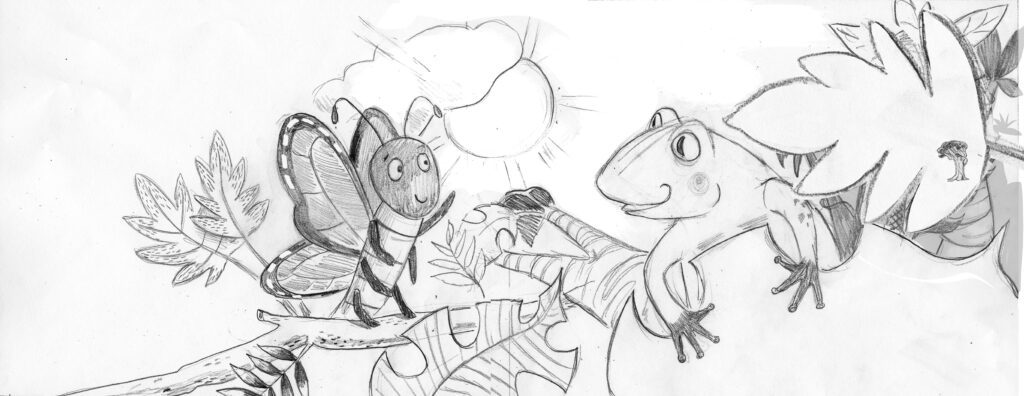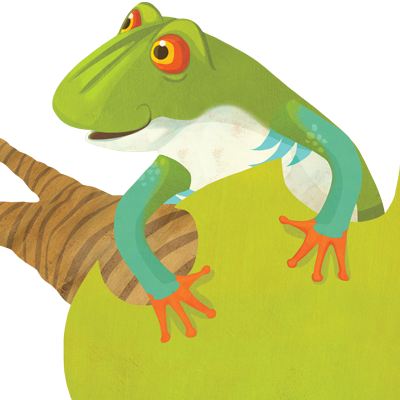
When you think about your favorite children’s book, you probably think about the illustrations just as much as–or more than!–the words and story. In fact, words and pictures are so closely entwined, it can be hard to remember one without the other. For example, when you think of Roald Dahl’s beloved books, you probably immediately summon up the classic Quentin Blake illustrations alongside them.
When author Joey Benun wrote his children’s story about a curious butterfly, he knew that the illustrations would be a vital part of the process. He wanted the story to come alive with color and emotion so that children would feel like they were embarking on an exciting adventure alongside Pebbles.
When self-publishing a book, it’s important to remember the partnership between pictures and words. The images in your picture book deserve just as much love and attention as the words and story.

Studies show that a book’s illustrations improve a child’s ability to remember the story. It also impacts the parent-child interaction that occurs during reading time. When they’re done thoughtfully, images do more than illustrate what’s going on in the text. They give the readers additional information that enriches the story.
Illustrations can…
In Pebbles and the Biggest Number, the creators wanted to have lots of opportunities for children to find new information and treasures within the story. Each page has at least one science fact that gives readers more information about a topic in the story. The back of the book also has glossaries and fun supplemental information about big numbers.

When Joey was looking for someone to bring Pebbles to life, he said, “It was crucial that I find an illustrator that meets my taste and style. The pictures do half the talking, if not more!” Not only did he find the right style fit with illustrator Laura Watson; he found someone who he felt could practically read his mind!
Many would-be authors believe that as long as they hire a professional illustrator, they’ll be able to edit until they reach a product they love. However, the truth is that if you don’t find the right fit, you may get lost in a frustrating and extensive avalanche of edits and never quite achieve the look you want. Here are some tips for finding the right illustrator for you:

When searching for an illustrator, understanding different illustration mediums and styles can help you articulate what you want and connect with someone who shares your aesthetic style. Do you like complex collage pictures or a minimalist style? Realistic illustrations, or comical cartoons? Are you looking for digital or handcrafted art?
Here’s a small glimpse at the styles of just a few of the most popular children’s books today to give you an idea of the diversity available:
Remember: although they’ll overlap and influence each other, medium matters a lot less than style. For example, just because Pebbles and the Biggest Number was inspired by Eric Carle doesn’t mean that collage-style illustrations were more important than the stylistic hallmarks of color and vibrancy.

There are literally tens of thousands of illustrators available out there. But where do you find the right one? Here are a few places to look:
Most illustrators will offer a base price in order to create a preview picture or two. This allows you to see if they’ll be able to adopt your vision. You may need to preview numerous artists before you find the right fit.
In the case of Pebbles and the Biggest Number, Joey was able to get it right on the first shot! While he dug through hundreds of portfolios to find the right editors and designers, Laura was the first illustration candidate that he found, and she just happened to be a magic-slipper style fit right from the start.
Once you’ve found the right illustrator, finalize the business details with a contract. A good contract should include:
Creating a layout that will help the words and images of your book flow together is vital. Usually, this is done before passing it over to the illustrator. In the case of Pebbles and the Biggest Number, Joey worked with editor Brooke Vitale and with a designer to create a storyboard. A storyboard is a rough sketch of each page’s layout. Brooke also added very specific design notes within the story. This helped speed along the illustration process and prevent mistakes and extra edits.


In addition to the design notes and design layout, Laura worked with Joey to workshop the characters before diving into the final illustrations. This consisted of creating a series of black-and-white drawings until the characters became more clear. This made it easier to do edits and get the characters to look just as they should. Once they were approved, colors were added.
Self-publishing is an exciting – and sometimes overwhelming – journey. However, with the right partnership, working out the illustrations is one of the most exciting parts. There’s nothing quite like seeing the story that’s been living in your head brought into the world in living color.


To learn more about the beautiful illustrations featured in Pebbles and the Biggest Number, read our interview with author Joey and illustrator Laura.